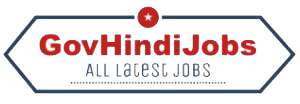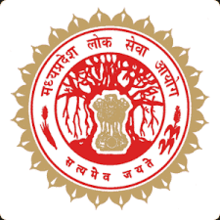Last Updated on मई 10, 2020 by Gov Hindi Jobs
गोवा लोक सेवा आयोग में सहायक प्रोफेसर (सिविल इंजीनियरिंग) पाठ्यक्रम – Goa PSC Assistant Professors (Civil Engineering) Syllabus
SYLLABUS FOR COMPUTER BASED RECRUITMENT TEST (CBRT)
FOR THE POST OF ASSISTANT PROFESSORS IN CIVIL ENGINEERING UNDER GOA COLLEGE OF ENGINEERING (ADVT. NO. 08 YEAR 2019)
| I. General English including Grammar | 5 marks |
| II. General Knowledge, Current Affairs and Events of National and International Importance | 10 marks |
| III. Logical Reasoning and Analytical Ability | 10 marks |
| IV. Core: | 50 marks |
A)Structural Engineering
Engineering Mechanics: System of forces, free-body diagrams, equilibrium equations; support reactions, Friction and its applications; Kinematics of point mass and rigid body; centroid ,centre of mass; second moment of area, Euler’s equations of motion; Impulse-momentum;
Solid Mechanics: Energy methods; Bending moment and shear force in statically determinate beams; Simple stress and strain relationships; Theories of failures; Simple bending theory, flexural and shear stresses, shear centre; Uniform torsion, buckling of column, combined and direct bending stresses.
Structural Analysis: Statically determinate and indeterminate structures by force/ energy methods; Method of superposition; Analysis of trusses, arches, beams, cables and frames; Displacement methods: Slope deflection and moment distribution methods; Influence lines; Stiffness and flexibility methods of structural analysis. Construction Materials and Management: Construction Materials: Structural steel – composition, material properties and behaviour; Concrete – constituents, mix design, short-term and long-term properties; Construction Management: Types of construction projects; Tendering and construction contracts; Rate analysis and standard specifications; Cost estimation; Project planning and network analysis – PERT and CPM.
Concrete Structures: Working stress, Limit state and Ultimate load design concepts; Design of beams, slabs, columns; Bond and development length; Prestressed concrete; Analysis of beam sections at transfer and service loads.
Steel Structures: Working stress and Limit state design concepts; Design of tension and compression members, beams and beam- columns, column bases; Connections – simple and eccentric, beam column connections, plate girders and trusses; Plastic analysis of beams and frames.
B) Geotechnical Engineering
Soil Mechanics: Origin of soils, soil structure and fabric; Three-phase system and phase relationships, index properties; Unified and Indian standard soil classification system; Permeability – one dimensional flow, Darcy’s law; Seepage through soils – two-dimensional flow, flow nets, uplift pressure, piping; Principle of effective stress, capillarity, seepage force and quicksand condition; Compaction in laboratory and field conditions; One- dimensional consolidation, time rate of consolidation; Mohr’s circle, stress paths, effective and total shear strength parameters, characteristics of clays and sand. Foundation Engineering: Sub-surface investigations – scope, drilling bore holes, sampling, plate load test, standard penetration and cone penetration tests; Earth pressure theories – Rankine and Coulomb; Stability of slopes – finite and infinite slopes, method of slices and Bishop’s method; Stress distribution in soils – Boussinesq’s and Westergaard’s theories, pressure bulbs; Shallow foundations – Terzaghi’s and Meyerhoff’s bearing capacity theories, effect of water table; Combined footing and raft foundation; Contact pressure; Settlement analysis in sands and clays; Deep foundations – types of piles, dynamic and static formulae, load capacity of piles in sands and clays, pile load test, negative skin friction.
C) Water Resources Engineering
Fluid Mechanics: Properties of fluids, fluid statics; Continuity, momentum, energy and corresponding equations; Potential flow, applications of momentum and energy equations; Laminar and turbulent flow; Flow in pipes, pipe networks; Concept of boundary layer and its growth. Forces on immersed bodies;
Hydraulics: Dimensional analysis and hydraulic similitude; Kinematics of flow, velocity triangles; Basics of hydraulic machines, specific speed of pumps and turbines;Hydrology: Hydrologic cycle, precipitation, evaporation, evapo-transpiration, watershed, infiltration, unit hydrographs, hydrograph analysis, flood estimation and routing, reservoir capacity, reservoir and channel routing, surface run-off models, ground water hydrology – steady state well hydraulics and aquifers; Application of Darcy’s law. Irrigation: Duty, delta, estimation of evapotranspiration; Design of lined and unlined canals, head works, gravity dams and spillways;
D) Environmental Engineering
Water and Waste Water: Quality standards, basic unit processes and operations for water treatment. Drinking water standards, water requirements, basic unit operations and unit processes for surface water treatment, distribution of water. Sewage and sewerage treatment, quantity and characteristics of wastewater. Primary, secondary and tertiary treatment of wastewater, effluent discharge standards. Domestic wastewater treatment, quantity of characteristics of domestic wastewater, primary and secondary treatment. Unit operations and unit processes of domestic wastewater, sludge disposal. Air Pollution: Types of pollutants, their sources and impacts, air pollution meteorology, air pollution control, air quality standards and limits. Municipal Solid Wastes: Characteristics, generation, collection and transportation of solid wastes, engineered systems for solid waste management (reuse/ recycle, energy recovery, treatment and disposal).
Noise Pollution: Impacts of noise, permissible limits of noise pollution, measurement of noise and control of noise pollution.
E) Transportation Engineering Transportation
Infrastructure: Highway alignment and engineering surveys; Geometric design of highways – cross-sectional elements, sight distances, horizontal and vertical alignments; Geometric design of railway track; Airport runway length, taxiway and exit taxiway design. Highway Pavements: Highway materials – desirable properties and quality control tests; Design of bituminous paving mixes; Design factors for flexible and rigid pavements; Design of flexible pavement using IRC: 37-2012; Design of rigid pavements using IRC: 58-2011;
F) Principles of surveying
Maps – scale, coordinate system; Distance and angle measurement – Levelling and trigonometric levelling; Traversing and triangulation survey; Total station; Horizontal and vertical curves. Photogrammetry – scale, flying height; Remote sensing – basics, platform and sensors, visual
image interpretation; Basics of Geographical information system (GIS) and Geographical Positioning system
Note:
Duration for C.B.R.T : 75 Minutes
Maximum Marks for C.B.R.T : 75 Marks




